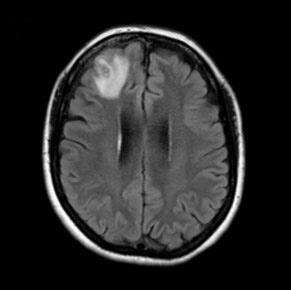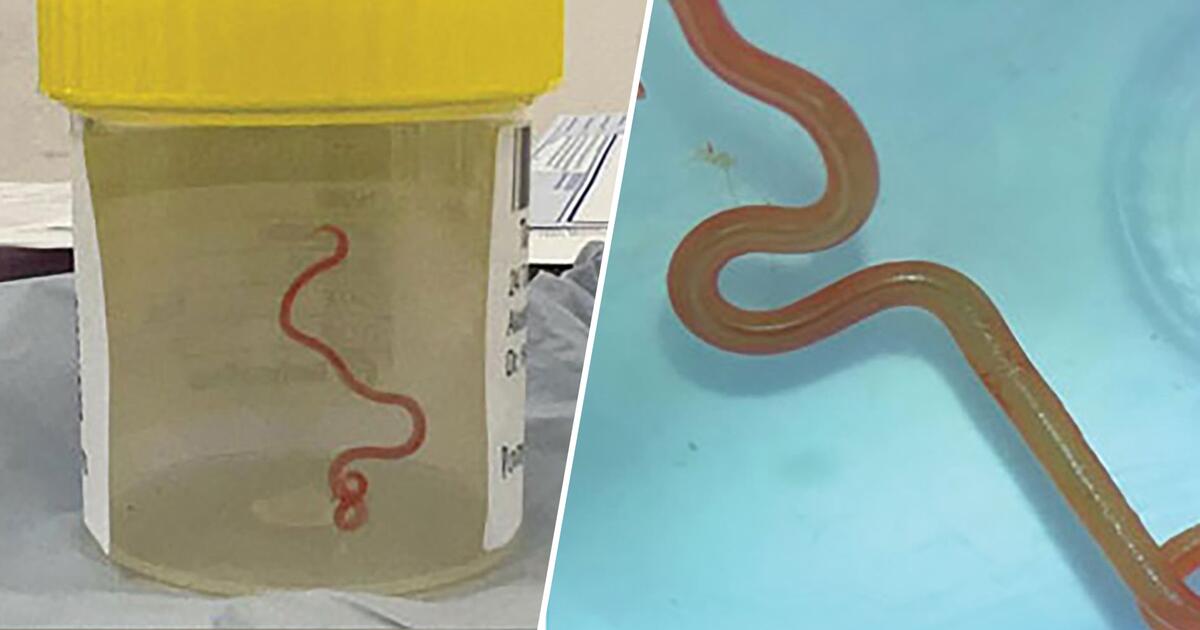Australia
Updated on 08/29/2023 at 07:50
© AFP
An Australian woman complained of abdominal pain, coughing and forgetfulness. While performing an operation, doctors discovered a worm writhing in her brain, the first of its kind in the world.
An astonishing discovery during surgery in Australia: in a hospital in Canberra, doctors removed a live eight-centimeter worm from the brain of a 64-year-old woman.
The parasite is the species Ophidacaris robertsi, which is normally only found in diamondback snakes, according to a new study in the journal.Emerging infectious diseasesAustralian newspaper The Guardian reported on Tuesday that the neurosurgeon who performed the operation was completely at a loss and consulted colleagues.
First human case of ovidascaris worldwide
“This is the first human case of ovidascaris to be described anywhere in the world,” Australian media quoted Professor Sanjaya Senanayake, an infectious disease expert at Canberra Hospital and co-author of the study. “To our knowledge, this is also the first case in which the brain of a mammal species, whether human or not, has been affected.” Doctors described the worm as “alive and wriggling”.
What exactly they discovered in the woman’s brain was demonstrated by doctors by testing DNA on the worm. Senanayake expressed his sympathy for the patient, saying, “It is never easy or desirable to be the first patient in the world to suffer anything.” “I cannot express enough our admiration for the woman who has shown patience and courage in this process.”
Ovidascaris roundworm, Senanayake noted, also affects animals in other parts of the world. Therefore, “it is likely that more cases will be discovered in the coming years.” The good news: Ophidacaris infection is not transmitted from person to person. Therefore, a woman cannot infect anyone.
Brain worm: The patient initially complained of abdominal pain and diarrhea
In early 2021, the patient from New South Wales initially complained of abdominal pain and diarrhea for weeks, followed by a dry cough and night sweats. A year later, her symptoms also included forgetfulness and depression.

© Emerging Infectious Diseases
The woman was then referred to Canberra Hospital. An MRI scan of her brain eventually revealed abnormalities that required surgery.
In the recordings, doctors initially identified only an “atypical lesion” in the frontal part of the brain. During the subsequent operation, the surprised doctors finally pulled an eight centimeter round worm from the brain.
“A neurosurgeon certainly never thought he’d find a wriggling worm,” Senanayake told the Guardian. “Neurosurgeons regularly deal with infections in the brain, but this was a one-off discovery that no one expected.”
It is possible that the Australian woman became infected through the eggs of the parasite
But how did the parasite get into the Australian’s brain? She added that the woman lives in a lake area where carpet snakes also live. Although they did not come into direct contact with the snakes, they often collected native wild plants and herbs around the lakes to use in cooking.
The researchers hypothesize that the snake may have shed parasitic eggs in its feces onto the grass. It is possible that the patient became infected after touching grass and transferring worm eggs to food or kitchen utensils. (dpa/afb/ank)
Teaser image: © Emerging Infectious Diseases/AAP/dpa

“Typical entrepreneur. Lifelong beer expert. Hipster-friendly internet buff. Analyst. Social media enthusiast.”





More Stories
This is what it’s really like in tourist areas
Kennedy’s nephew and US presidential candidate: He had a worm in his brain
Judge flees to Belarus – Tusk warns of secret services